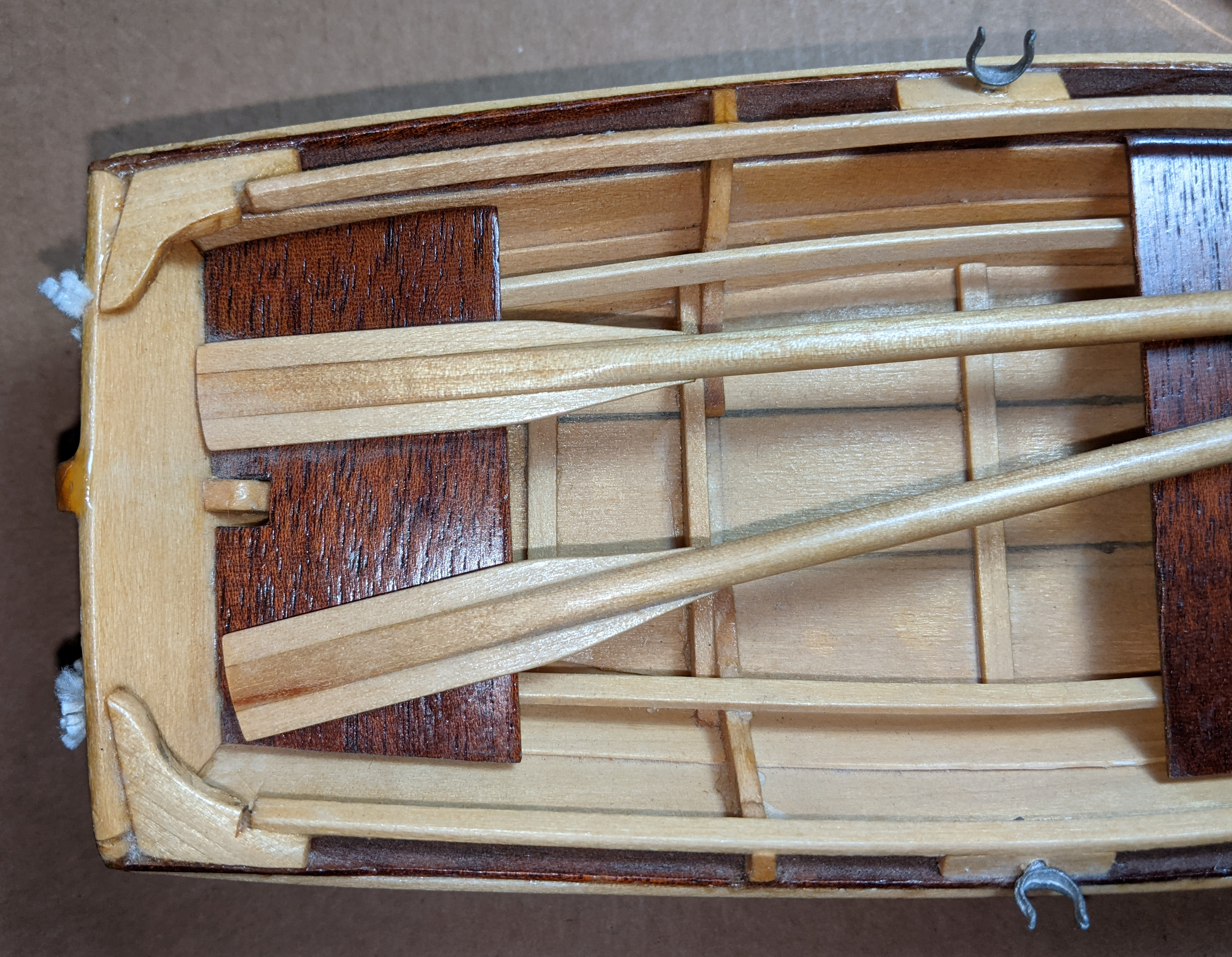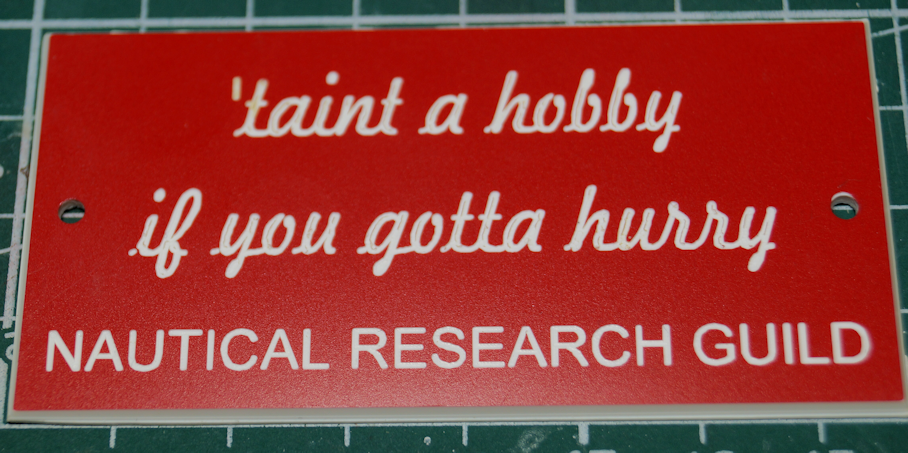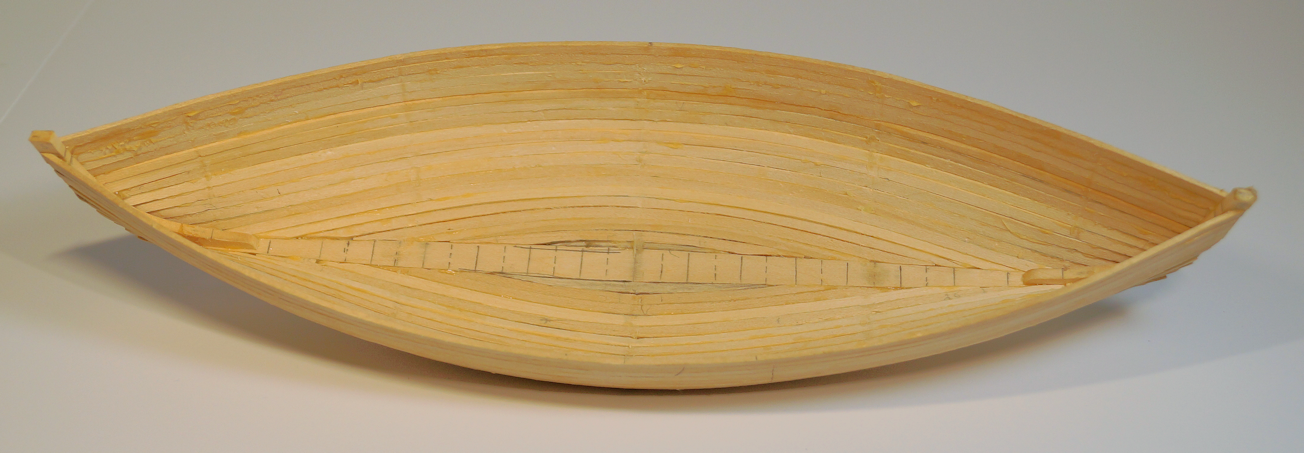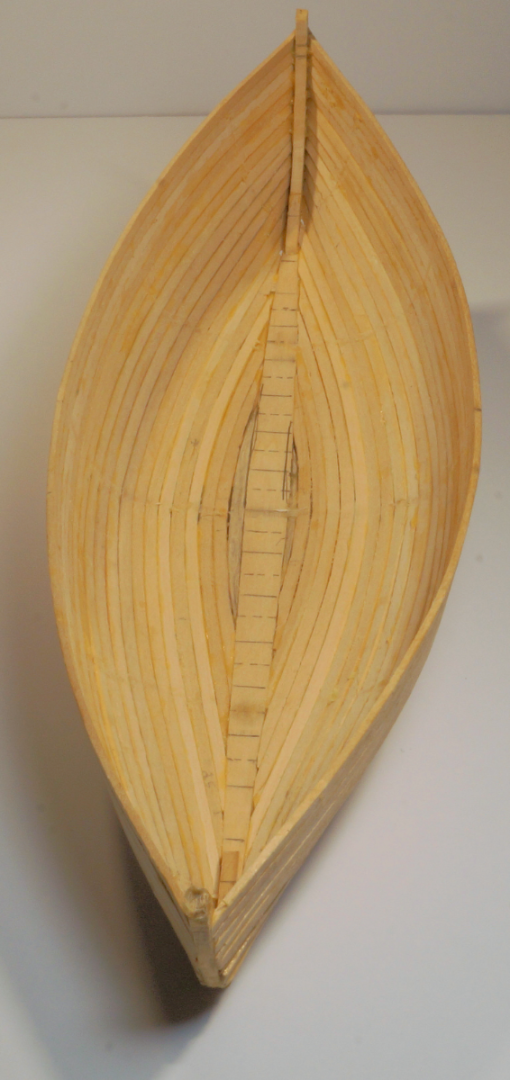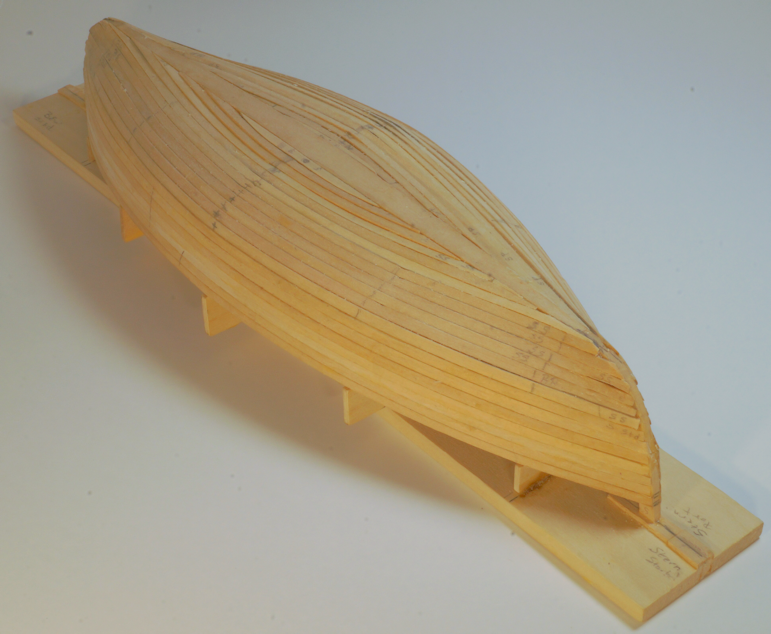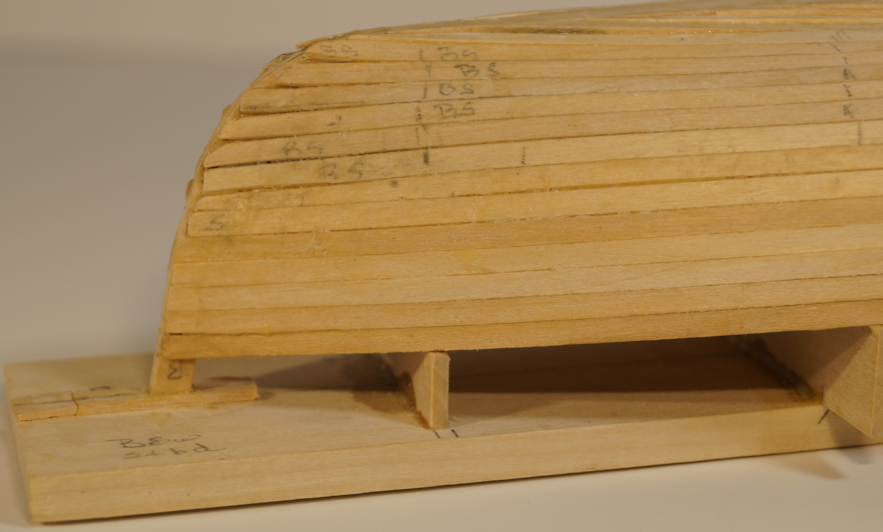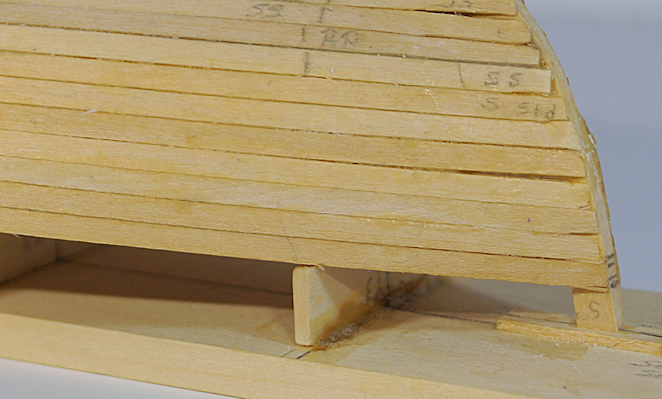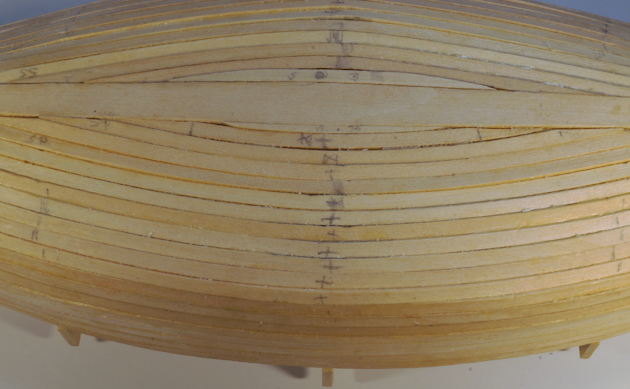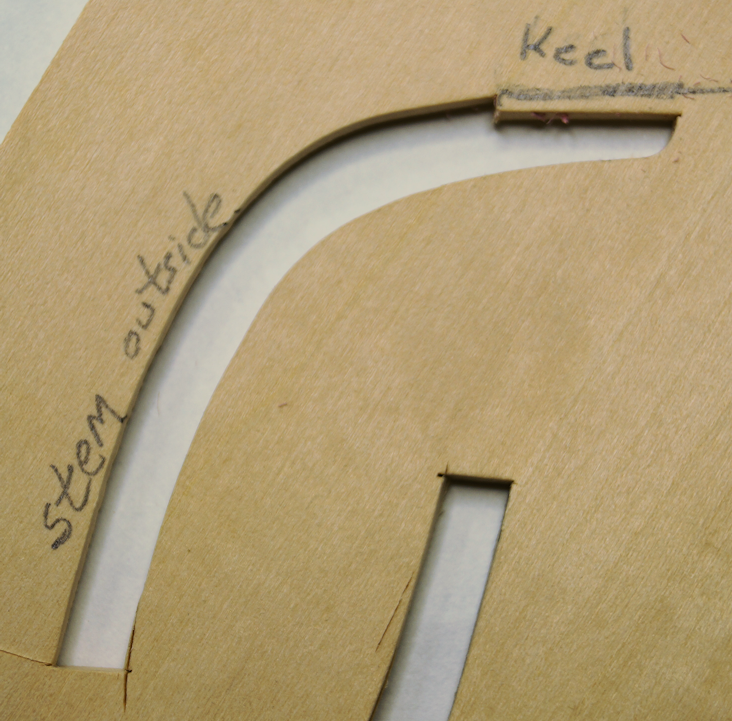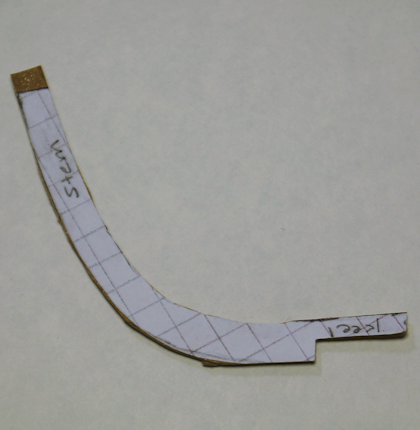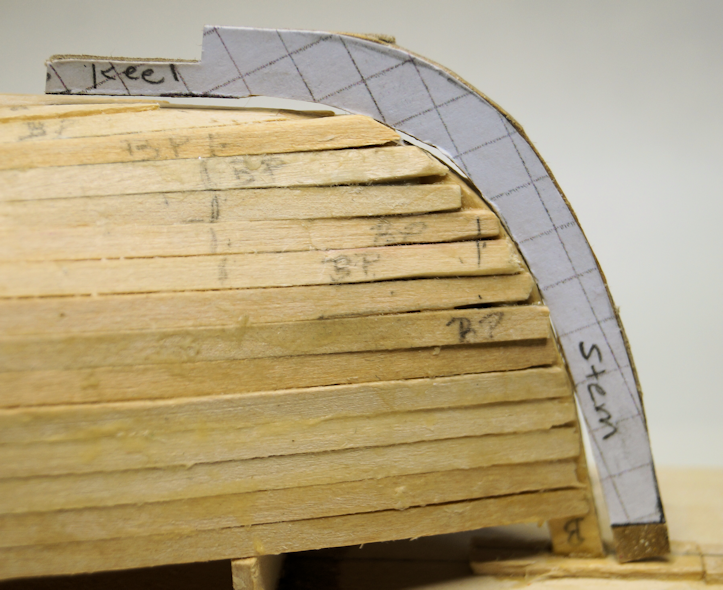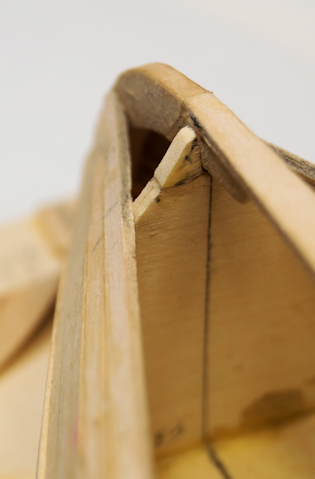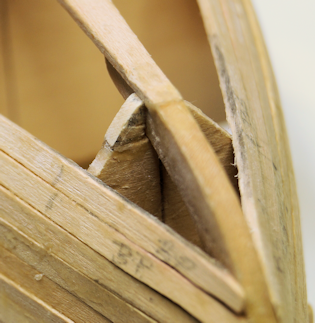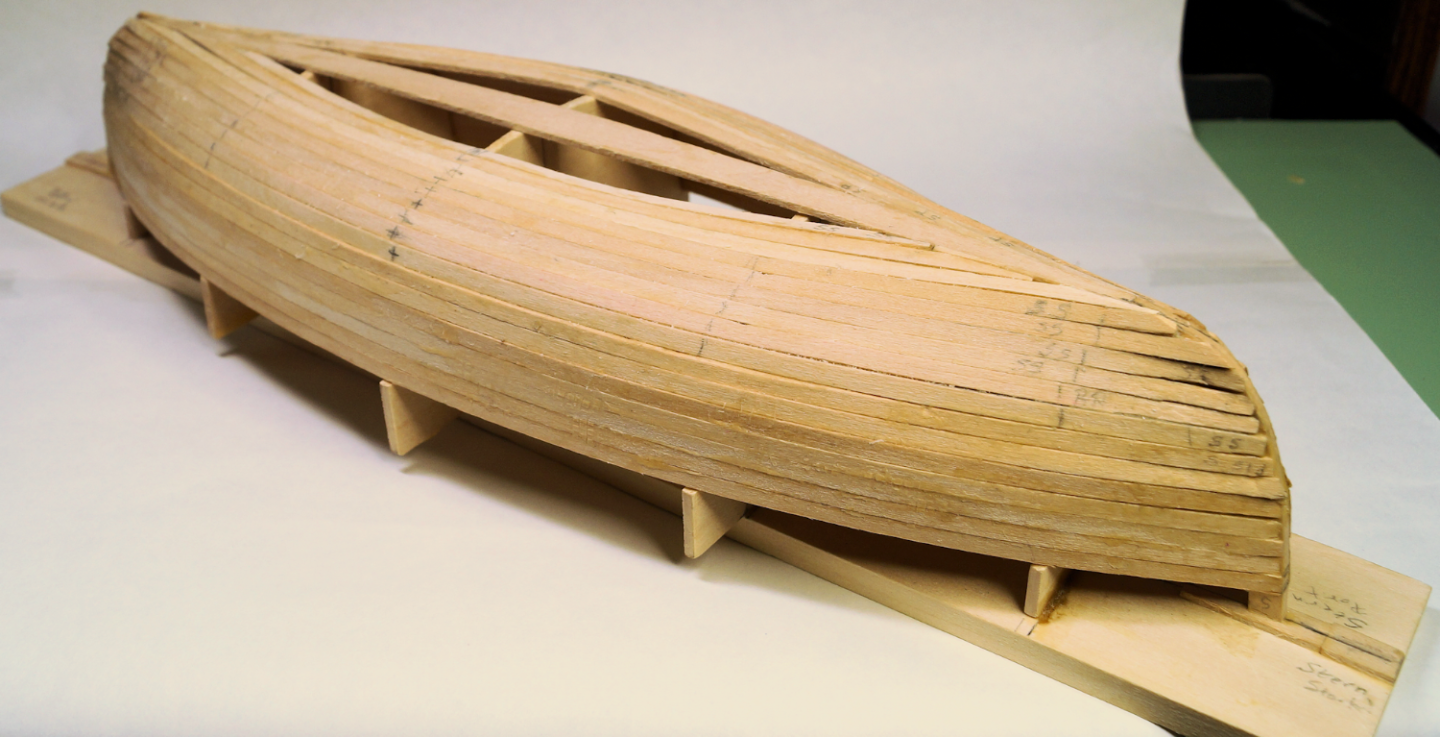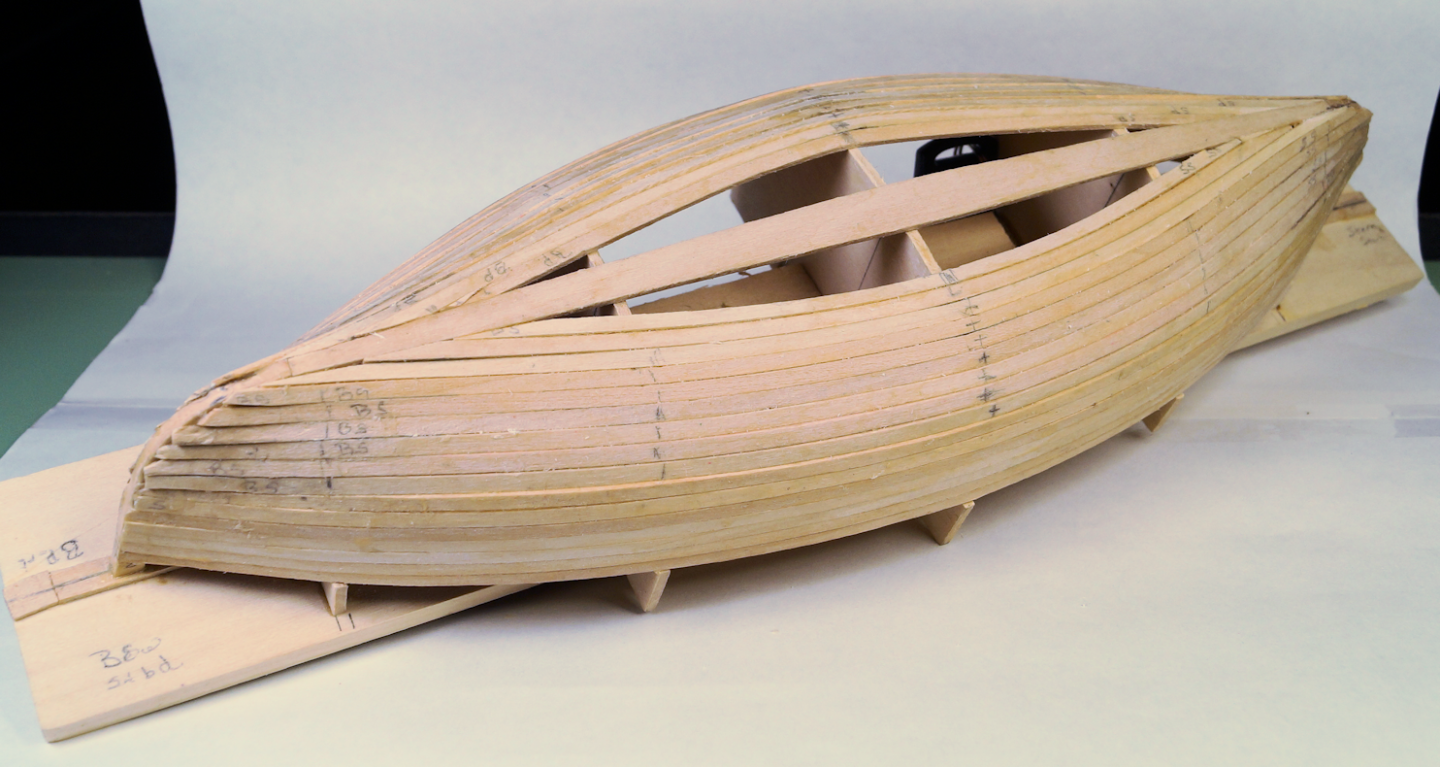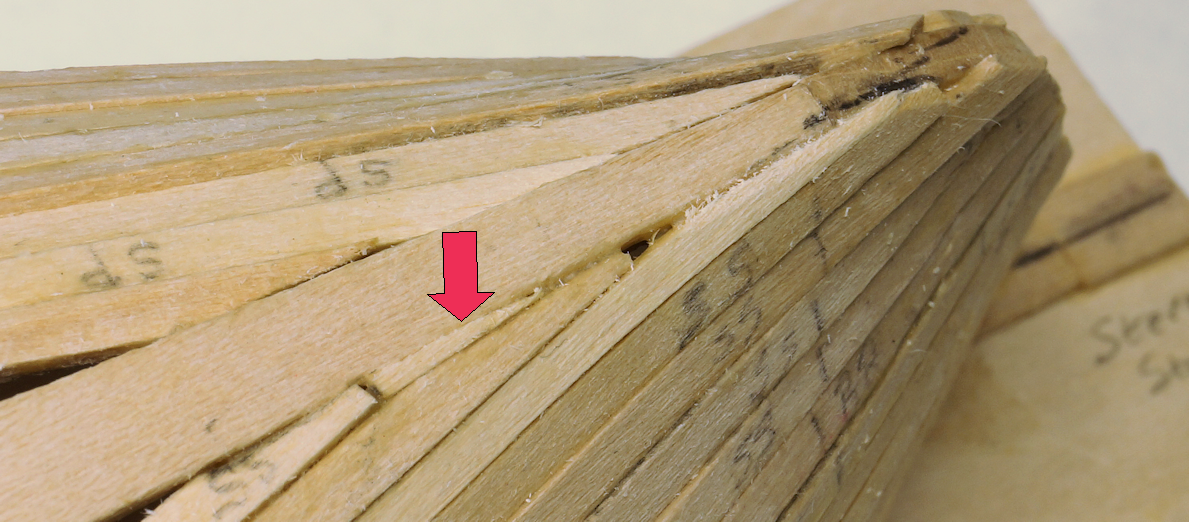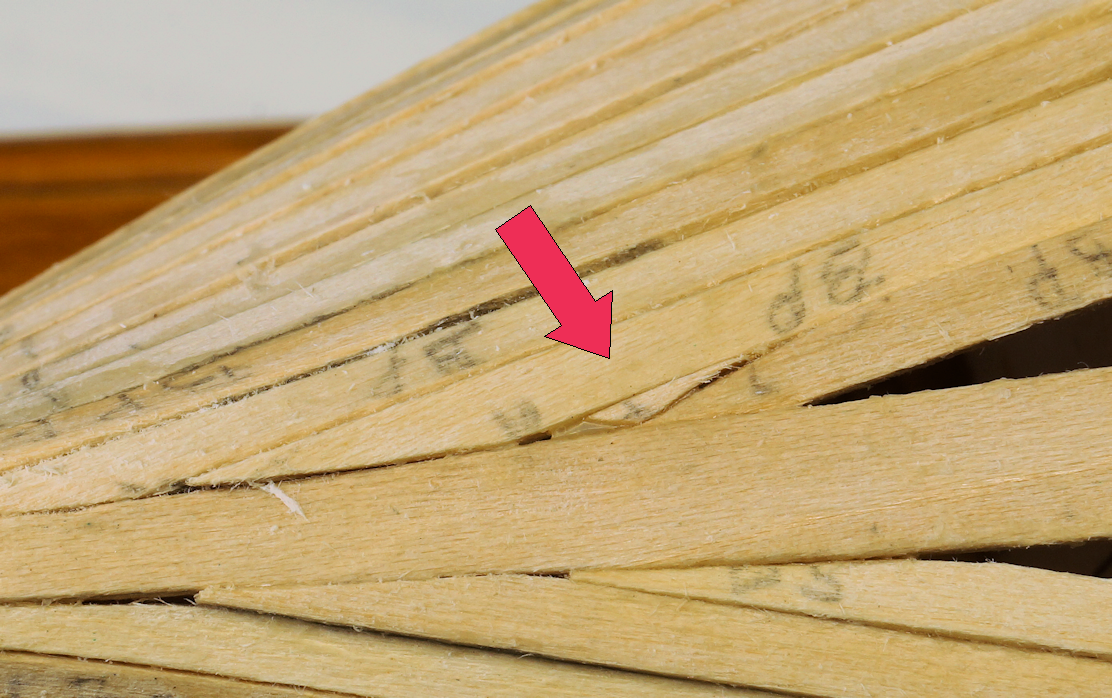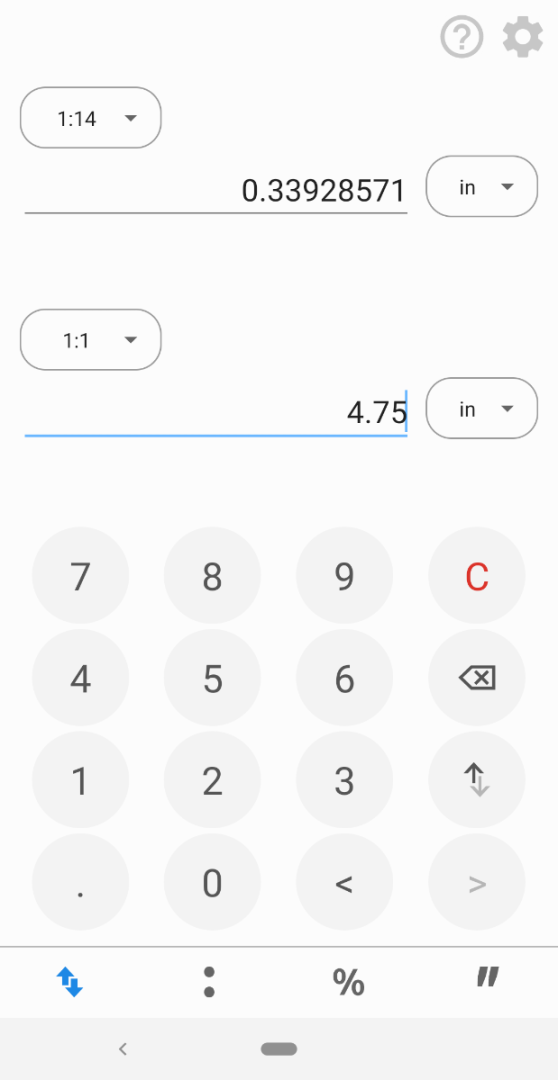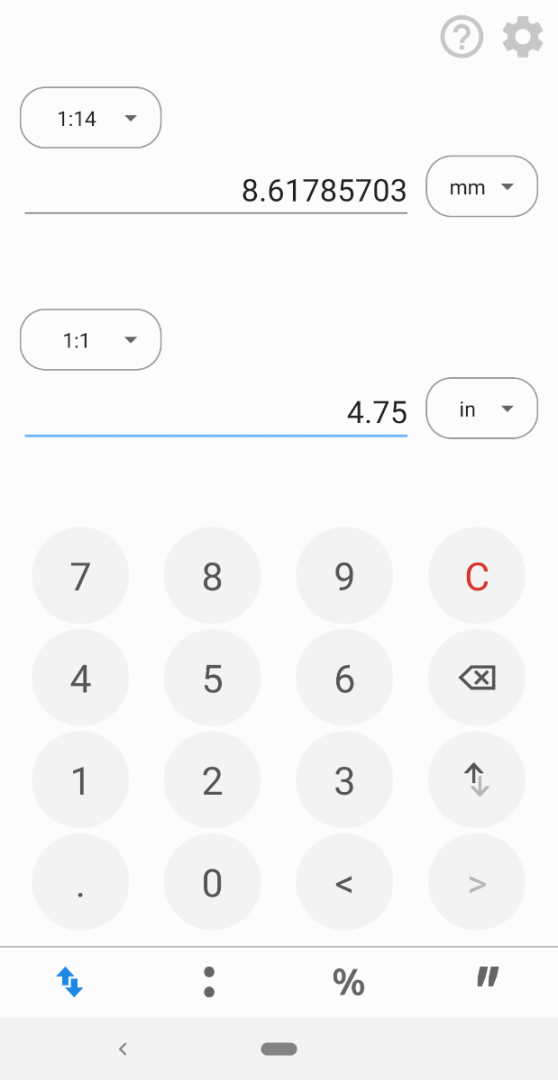-
Posts
907 -
Joined
-
Last visited
Content Type
Profiles
Forums
Gallery
Events
Everything posted by robert952
-
My thanks to all who shared. I will mention something that may be obvious. But I have been know to overlook the obvious. Lots of light and probably magnification. Hard to reach usually means hard to see. So, I suggest a lighted magnifier on an articulated arm. Due to work space limits, this may or may not work. Alternatively, a head band with lights (with or without magnifiers) are one of those love/hate relations with me. Weight and comfort the big problems in my opinion. However, I was helping my son with a home project a couple of days ago. He had a couple of LED headband lights that amazed me with their brightness. (Bright enough to easily watch the operation of a dryer vent 25 feet up in the dark. It wasn't dark when we started the project.) They were similar to this: Home Depot link to product. (There's other sources and variations on rechargeable, brightness modes, etc. I'd bet there's a magnifier headband with super bright LEDs.) The one he had was magnetic and attached to the head band or could be placed on metal surface. It was very lightweight. I am rethinking the headband approach alternative.
-
Based on your work with the Dory and how it looks, either of the rereleased models will be easy enough and give you a learning experience. I wonder if Model Shipways are true rereleases or did they do any changes. (Not that there's a lot needed.) I also have some of the older MW models in my stash I may build...one day. I am not sure why the two different skill levels. I built the dinghy. It is a good basic model, minimal tools required. Maybe even easier than the dory you just finished. If I were to build it again, I'd tweak how the rope work was done to make it a bit more 'real looking' with proper binding. I think that would add a bit of challenge to add that touch. Good luck. I look forward to the build logs on these.
- 19 replies
-
- Grand Banks Dory
- Model Shipways
-
(and 3 more)
Tagged with:
-
I am gaining an affinity for these smaller boat models. Look forward to seeing this build.
- 22 replies
-
- Lowell Grand Banks Dory
- Model Shipways
-
(and 1 more)
Tagged with:
-

Shot Garlands
robert952 replied to tmj's topic in Discussion for a Ship's Deck Furniture, Guns, boats and other Fittings
A great thread for those (like @tmj and me) can learn details. I appreciate the time all took to post an answer. -
You might find this video useful. Making Sails for Ship Models from Silkspan, Part 3
-
Quick update on this build. Likely not going to do much for next few months. Possibly some sanding and filling in the garage). We are in the middle of changing residences. (That's the simple description.) New house being built - schedule closing early next year. Keeping track, will make a few trips to keep track of progress - 3 hour drive from current home. Also, will be 'staging' our belongings to a U-Stor-It type place. Getting current home ready for market. Goes live late this month/early November - should sell quickly as I did a lot of upgrades and the market here is still a hot seller's market Starting to pack stuff up so that the house looks like no one really lives here. Mostly just 'declutter stuff.' But that includes my modeling desk per the real estate agent. This is also called 'staging.' (Maybe I should post in 'Play on Words.)
- 44 replies
-
- maine peapod
- peapod
-
(and 4 more)
Tagged with:
-

Planking Book?
robert952 replied to BWDChris's topic in Building, Framing, Planking and plating a ships hull and deck
@Paul Le Wol I feel I need to point out: syrenmodelshipcompany.com is incorrect. The correct URL is this link syrenshipmodelcompany.com To go straight to the monographs click here: HMS Winchelsea 1764. -

Planking Book?
robert952 replied to BWDChris's topic in Building, Framing, Planking and plating a ships hull and deck
@RossR I had forgotten about the NRG Half Hull. Thanks for the reminder. It's now on sale at the NRG store, too. -
Removed boat from the form. Since I had success with loosening the planks with white vinegar, I figured that would be the same solution for this phase. A bit of vinegar on a cotton swab at the two stem joints. Let it soak a couple of minutes. Then gently pried the stem from the base board. Only a bit of force needed to break the hull loose. The instructions indicate the hull might pull in on the sides. They suggest using the midship bulkhead as a brace. I saw that same suggestion made in a couple of build logs for this kit. However, I did not have that issue. I measured the beam on the form before I removed the hull. I measured the beam again off the form. Exactly the same measurements, no pulling in. However, I will remove the center bulkhead from the base board and have it ready just in case. The lines on the keel board are guide for the ribs (solid lines) and floor boards (dashed lines). Once the ribs are in place, the form will hold its dimensions. When I am ready for installing ribs and floor boards I will plan for (and likely install) the mast step. On the 15' prototype, that point is 2-1/2 ' in from the bow stem. For this 14' version, the dimension probably will be close to that. If I calculate properly it should be 2' 4" from the bow. In reality, it's likely not to matter too much at this scale. However, it gives me a target location. Here's a another views. For now, it's time to do some sanding and filling and more sanding.
- 44 replies
-
- maine peapod
- peapod
-
(and 4 more)
Tagged with:
-

Planking Book?
robert952 replied to BWDChris's topic in Building, Framing, Planking and plating a ships hull and deck
Adding my welcome aboard. Here's my typical long winded answer/suggestion. I was thinking along the same lines of @SkiBee . What are you wanting to build? You say you are new to model ships. You may want to review this thread which offers a lot of general advice for those new to this hobby: A Cautionary Tale. I would suggest you consider starting with plank on bulkhead type over a plank on frame. I haven't tackled a POF and it may be awhile. But that's me. Proceed at your own pace. Your results may vary. If you haven't got a model in your stash and just now considering a kit, I'd suggest getting your feet wet with a simple model that has only a few 'planks'. Model Expo carries Model Shipways line that has some kits designed for the beginner (Grand Banks Dory and Sailing Pram). They also carry Midwest models (Dinghy or Flattie) which have a few boards. The models are aimed at the beginner that can start you on a path to learning about planking. If you have some experience with model building or a related hobby you may feel confident enough to build a more advanced model. (Shop around for what your budget can handle.) As to your specific question about books: @prutser suggestion is a good source. I haven't read @Paul Le Wol suggestion but I'm sure it has information you will find useful. (Thanks for the recommendation, Paul. I'll run out there and download it myself.) Many books on ship modeling have chapters on planking. Examples The Ship Model Builders Assistant by Charles Davis and Ship Model Building by Gene Johnson. I have these two in my in my library. These also cover other aspects of model ship building. There's a lot of other models and books out there. Find your comfort level when determining what to build. As @Knocklouder says, you are in a great source of info here at MSW. Use the search box to find build logs on the boats I mentioned. Ask specific questions. You will likely get several answers and suggestions. Read through build logs to see how different people plank their models. Also, you get a preview of models out there you might want to consider. There's several on the Dory and Pram that have been built or in the process of being built. (If you want to see my example of planking, I just finished planking Midwest Model's Maine Peapod. Link to my build log is in my signature below. Maybe not the best example, but I am pleased with how it looks.) -
Planking done. Finally! In this image the lines you see near the sheer (bottom on the image) are random pencil marks - not cuts or gaps. They just suddenly appeared and I see no reason why I would have put them on the hull. (Is there such a think as work bench poltergeist?) The little 'center marks' and short lines follow (more or less) the bulkheads were my guides to make sure I placed the board in the same position while I bent and glued the planks. . Another angle. I have a bit of work with sanding and filling (and sanding some more) as you can see by these images. If anyone sees an area I need to be concerned with, let me know please. The last few planks on the keel proved a challenge to me. (Again, pencil marks are not cuts or gaps on the one plank off of the keel plane. I found it interesting that the small bend/radius was harder to do than the longer curved pieces. It was difficult to hold the boards in place as they dried since there's no room for clamps or clips. I ended up with a lot of painter's tape. Here the gaps will need filling more so than other areas of the hull. Next steps: Remove the hull from the strong back. That should go ok with little or no problems. I think I did a decent job by using bees wax and breaking errant glued joints as I went. I will know in next day or two. (I have a new PC game to play with and will likely spend some time there.) I have done a little preliminary sanding on some of the planks to fair the keel lines a bit. I plan on taking my time on the fairing. I checked my sandpaper supply. It was in disarray and required a bit of reorganizing. Now all the grits are sorted. So, I won't have trouble finding what I need. After that I will create the keel (as previewed above) and assemble that to the hull. Then I will decide whether to paint the hull immediately after installing the keel or wait until I get the ribs and floor boards installed. (Any insight will be welcomed.)
- 44 replies
-
- maine peapod
- peapod
-
(and 4 more)
Tagged with:
-

My other Hobby by Javlin - Tabletop/Nightstand - 1/1
robert952 replied to Javlin's topic in Non-ship/categorised builds
It's a nice looking stand regardless of the woes you had. Good Job in my book. -

My other Hobby by Javlin - Tabletop/Nightstand - 1/1
robert952 replied to Javlin's topic in Non-ship/categorised builds
Following this build log. Looks good so far. -
Preview of revised keel. Per the instructions, after faring the hull a false keel is added: two 1/8" pieces attach to each stem and meet in the middle of the boat. While that may be a several days away, it's never to late to think about this step. As I said, I want to model this after a drawing in Chapelle's book referenced at the start of this build log. Per that drawing, the keel extends from the bottom of the hull for 4-3/4". The top of the stems taper to 3-1/4". I will use these dimensions, though I may forgo the taper as then I can use a constant measure for the stems. To create a pattern, I used the original die cut sheet that held the stems. The outside measure of that stem will be the inside measure of my keel. I then cut a cardboard pattern as a practice test piece so that I can check the fit. Then a quick check to see how close the fit is at this point. Not a bad fit considering the boat is on the form. Once I fair the hull, I will repeat the process adjusting as needed for a good fit. The rest of the keel sits on the flat bottom. A scarf joint (as you see on the pattern) will be the method to assemble the keel to the hull. I will make all three pieces for the hull and make sure they fit well. I will use a similar approach to make the rudder for the boat.
- 44 replies
-
- maine peapod
- peapod
-
(and 4 more)
Tagged with:
-
Bulkhead repairs; update on plank progress. While waiting on the glue to set on my latest work, I got the camera out and took some photos. I figure this is a good time to update my build log. Bulkhead repairs. As a follow up to the previous post, here's the results of my repair on the bulk heads. They did the job (as you will see shortly) of supporting the next couple of planks during the assembly process. On the 'bad news, good news' I managed to break off one of the tips. However, since it was a clean break and the piece did not get lost on the workbench (or sucked up by the vacuum, I was able to just glue it back in place. Update of planking progress I have made progress. I estimate two+ a sliver planks on the (arbitrary) port side and three plus a sliver on the starboard side. That may give a sense of scale for these images. For me, planking takes patience and practice. As I have progressed on this hull, I think in some areas I have improved my process and skill. But I suspect even at the best of times, I will (and do) make a mistake. However, I get some satisfaction from successfully repairing or correcting my slip up. The latest example is seen below. Near each of the arrows on the images below you will see the planks were sanded too much or cut too short. My over enthusiasm in sanding left a couple of holes. While both of these might have been fixed later with the inevitable wood filler that I still need to use, the filler has something to adhere to and not be a messy plug. I fixed these with some of the small end pieces I have from the planks I sanded very carefully to fit those tiny pieces into the holes. Some fillers to make a better fit. The last plank on each side will like end up as a very small filler between the plank and the keel board. This model did not use a rabbet for the planks. I should be able to finish putting those in sometime next week...at least that's my plan. Then I remove the hull from the bulkheads and start fairing the hulls by sanding, then filling the gaps, follow by more sanding. Hopefully, I won't have too many repetitions of those steps.
- 44 replies
-
- maine peapod
- peapod
-
(and 4 more)
Tagged with:
-

Airbrush Paint
robert952 replied to CLovehitch's topic in Painting, finishing and weathering products and techniques
@Bob Cleek Thanks for posting your detailed response. At the risk of hijacking this thread but an apropos continuation here's a couple of questions. I have a model in process and I am pondering on I will paint it. I dug out my old air brush so I can practice with it. And I have seen more and more articles covering the use of oil-based artist's colors. The arguments seem very valid. So, I may give them a try. I plan to seal the model before painting and wonder how oil based paints work with sealed wood? Do you use another coating of some kind over the sealant before spraying oil based colors? One thing I will add to the discussion, be sure to practice using the airbrush with your 'brew.' A minor shift in the "brew" can make a big difference on the finished project. (My experience comes from long ago when I was doing photo retouching and graphic art type stuff.) -

Scale converter for Android (iOS maybe?)
robert952 replied to robert952's topic in Modeling tools and Workshop Equipment
Absolutely. @mtaylor. I have looked at and used plenty of on-line tools. (And I have used the spreadsheets available.) However, there is something to be said about having these new-fangled devices and seeing what's available for use with out any connection to internet. This is completely stand alone app. I see I forgot to mention the price: Free.- 2 replies
-
- scale convesion
- scale
-
(and 3 more)
Tagged with:
-
I found this handy easy to use scale converter at the Google Play store. I don't know if there is an iPhone version. (Maybe somebody can check and post response here.) It's called Scale Converter, by Scalar Pint. No popups, no ads. Simple tool. Very user friendly to convert between modeling scales and measurement units. Below is a screen shot of the app on my Android based phone. Drop down menus will allow selection of scales (1:1 through 1:20000) and length measurement (inch, mm, mile, km, etc.). No 'custom scale' available. However, the list is pretty extensive. The terms are typical inches, feet, mile, mm, meter, etc.) Type in measurement on either line to convert a length measurement. Example above: 1:1 measure of 4.75 inches converts to 0.339 inches at 1/14 scale. If you need to change measurements "on the fly", just click on the appropriate drop down to change. For example, in image below, I just clicked on mm in the drop down to get the 8.618 measurement. The icons at the bottom of the screen: double arrows - scale conversion; colon- scale calculator (input two length measurements); percent mark - percent calculator (input two ratios to get percentage factor between the scales); and decimal to fraction conversion (only works with yards, feet, and inches since metric is, well, metric). Again, input data on either line and conversion works. (If you need just a metric converter, use scale converter, put both scales at 1:1 and change length measurement term to metric on one and imperial on the other. Also, enter numbers on one line (either one) and your conversion gets reflected in other line. Hope you find this 'review' useful. Again, if someone can look to see if an iOS version exists and let us know here, I'd appreciate it.
- 2 replies
-
- scale convesion
- scale
-
(and 3 more)
Tagged with:
About us
Modelshipworld - Advancing Ship Modeling through Research
SSL Secured
Your security is important for us so this Website is SSL-Secured
NRG Mailing Address
Nautical Research Guild
237 South Lincoln Street
Westmont IL, 60559-1917
Model Ship World ® and the MSW logo are Registered Trademarks, and belong to the Nautical Research Guild (United States Patent and Trademark Office: No. 6,929,264 & No. 6,929,274, registered Dec. 20, 2022)
Helpful Links
About the NRG
If you enjoy building ship models that are historically accurate as well as beautiful, then The Nautical Research Guild (NRG) is just right for you.
The Guild is a non-profit educational organization whose mission is to “Advance Ship Modeling Through Research”. We provide support to our members in their efforts to raise the quality of their model ships.
The Nautical Research Guild has published our world-renowned quarterly magazine, The Nautical Research Journal, since 1955. The pages of the Journal are full of articles by accomplished ship modelers who show you how they create those exquisite details on their models, and by maritime historians who show you the correct details to build. The Journal is available in both print and digital editions. Go to the NRG web site (www.thenrg.org) to download a complimentary digital copy of the Journal. The NRG also publishes plan sets, books and compilations of back issues of the Journal and the former Ships in Scale and Model Ship Builder magazines.

